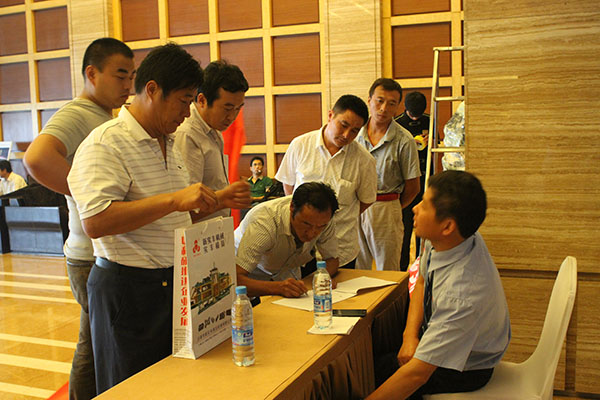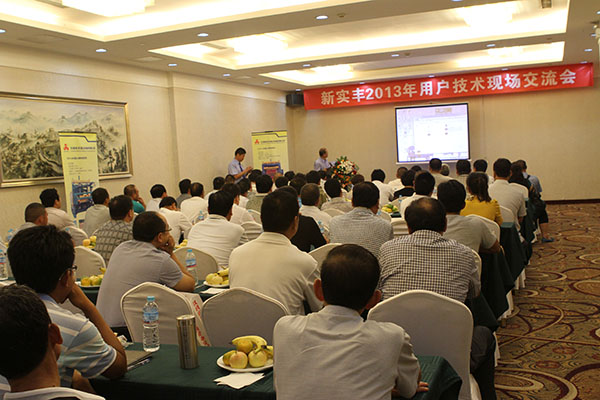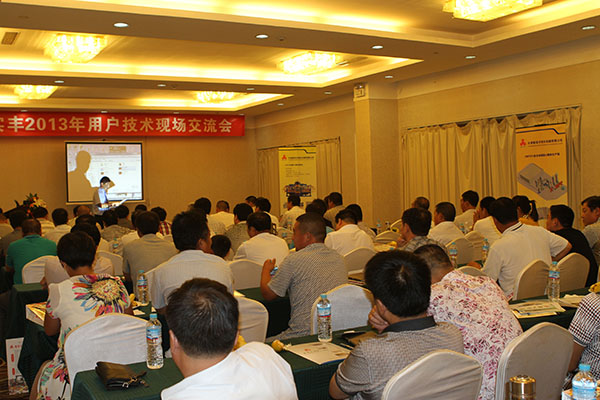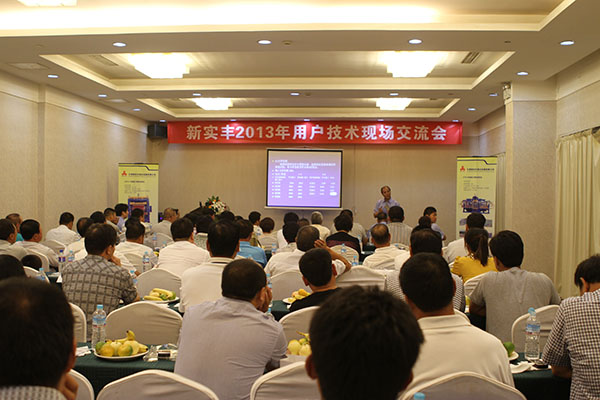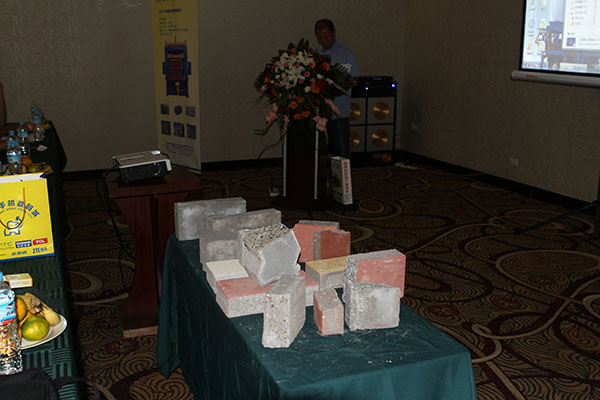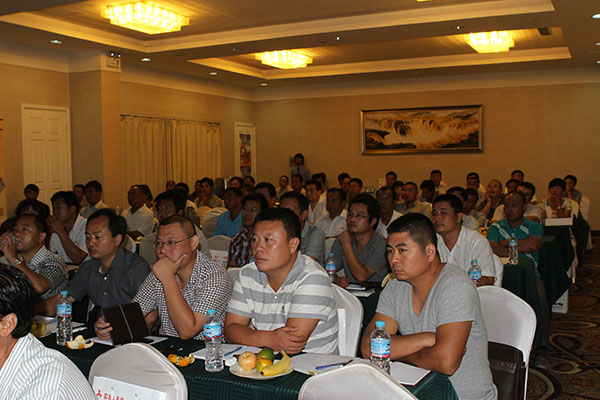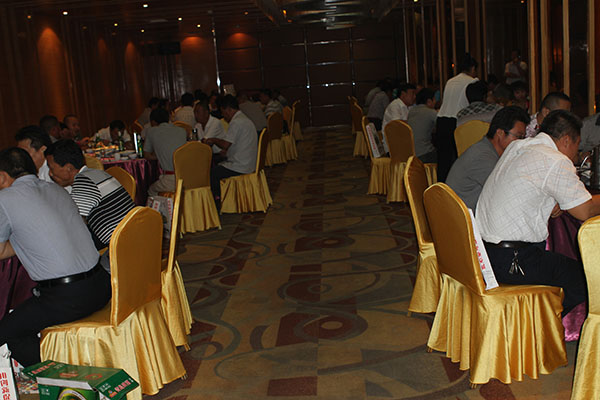In 2013,SHIFENG GROUP organized a technology seminar in the beautiful Shandong province.Our engineers shared a lot of useful experiences to customers.Here below we list maintenance introductions for you.
A regular maintenance plan can not only prolong the service life of the cement brick machine, but also reduce the occurrence of faults and avoid the delay of production plan.
Ⅰ Overall inspection:
1. Clean the mould cavity and the greasy dirt and waste on the surface, spray anti-rust oil on the mould cavity after cleaning, and spray again. Check whether the relevant parts of the cement brick machine are damaged and whether the loose parts are fastened to ensure the safety and reliability of the machine during production. Check whether the drawing, forming and pressing surfaces of the cement brick machine mold are worn, and repair welding, lapping and polishing the worn parts. Check the pressing and unloading parts, repair and replace the damaged parts. Check the guide and wedge mechanism, repair and replace the worn and cracked parts.
2. Check whether there are cracks and other fatigue damages in the invisible parts at ordinary times. For the newly found crack area and severely damaged parts, consult engineers for maintenance. Check the wear condition of punch and cutting edge, repair welding, grinding and replacement of worn parts. Reflect on the wear and change of formwork and mold base, and repair and replace the worn and deformed parts.
3. Check the flanging mold and the convex and concave mold clearance of the shaping mold of the cement brick machine and the wearing condition of the edges and lines, and repair the worn parts.For the cement brick machine, the mold in the production is an indispensable equipment, there is no way to produce the the customer’s brick without the mold, and the whole production line is unable to produce. If the machine mold is found damaged in the inspection, then the mold needs to be effectively repaired or replaced.
Ⅱ Maintenance method:
1. Partial repair method: this method is characterized by that each part of the equipment is not repaired at the same time, but is repaired separately according to each independent part of the whole equipment in order, and only one part is repaired each time. In this way, the downtime of each repair is short, and the production will not be affected.
2. Synchronous repair method: it refers to arranging several equipment closely related to each other in the process to be repaired at the same time, so as to realize synchronous repair and reduce the downtime of dispersed repair.
3. Component repair method: remove the whole component to be repaired, replace it with a set of components that have been assembled in advance, and then send the replaced components to the machine repair workshop for repair, so as to use them again next time. This method can save assembly time of parts disassembly and shorten repair downtime.
Post time: Apr-14-2020

